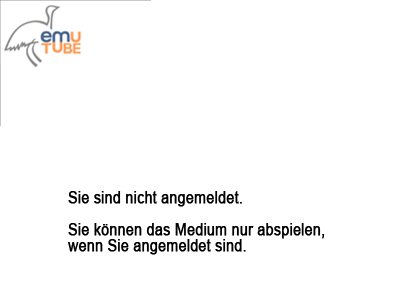Self-driving cars Self-driving cars An automated car (also known as a driverless car and a self-driving car)[1] is a vehicle that is capable of sensing its environment and navigating without human input.[2]Automated cars combine a variety of techniques to perceive their surroundings, including radar, laser light, GPS, odometry, and computer vision. Advanced control systems interpret sensory information to identify appropriate navigation paths, as well as obstacles and relevant signage.[3][4]The potential benefits of automated cars include reduced mobility and infrastructure costs, increased safety, increased mobility, increased customer satisfaction, and reduced crime. These benefits also include a potentially significant reduction in traffic collisions;[5][6] resulting injuries; and related costs, including less need for insurance. Automated cars are predicted to increase traffic flow;[7] provide enhanced mobility for children, the elderly,[8] disabled, and the poor; relieve travelers from driving and navigation chores; lower fuel consumption; significantly reduce needs for parking space;[9] reduce crime;[10] and facilitate business models for transportation as a service, especially via the sharing economy.[11][12] This shows the vast disruptive potential of the emerging technology.[13]In spite of the various potential benefits to increased vehicle automation, there are unresolved problems, such as safety, technology issues, disputes concerning liability,[14][15] resistance by individuals to forfeiting control of their cars,[16] customer concern about the safety of driverless cars,[17] implementation of a legal framework and establishment of government regulations; risk of loss of privacy and security concerns, such as hackers or terrorism; concern about the resulting loss of driving-related jobs in the road transport industry; and risk of increased suburbanization as travel becomes less costly and time-consuming. Many of these issues arise because autonomous objects, for the first time, would allow computer-controlled ground vehicles to roam freely, with many related safety and security, even a moral concerns. Level 0: Automated system issues warnings and may momentarily intervene but has no sustained vehicle control.Level 1 („hands on“): The driver and the automated system share control of the vehicle. Examples are Adaptive Cruise Control (ACC), where the driver controls steering and the automated system controls speed; and Parking Assistance, where steering is automated while speed is under manual control. The driver must be ready to retake full control at any time. Lane Keeping Assistance (LKA) Type II is a further example of level 1 self driving.Level 2 („hands off“): The automated system takes full control of the vehicle (accelerating, braking, and steering). The driver must monitor the driving and be prepared to intervene immediately at any time if the automated system fails to respond properly. The shorthand „hands off“ is not meant to be taken literally. In fact, contact between hand and wheel is often mandatory during SAE 2 driving, to confirm that the driver is ready to intervene.Level 3 („eyes off“): The driver can safely turn their attention away from the driving tasks, e.g. the driver can text or watch a movie. The vehicle will handle situations that call for an immediate response, like emergency braking. The driver must still be prepared to intervene within some limited time, specified by the manufacturer, when called upon by the vehicle to do so. As an example, the 2018 Audi A8 Luxury Sedan was the first commercial car to claim to be capable of level 3 self driving. This particular car has a so-called Traffic Jam Pilot. When activated by the human driver, the car takes full control of all aspects of driving in slow-moving traffic at up to 60 kilometres per hour (37 mph). The function works only on highways with a physical barrier separating one stream of traffic from oncoming traffic.Level 4 („mind off“): As level 3, but no driver attention is ever required for safety, i.e. the driver may safely go to sleep or leave the driver's seat. Self driving is supported only in limited spatial areas (geofenced) or under special circumstances, like traffic jams. Outside of these areas or circumstances, the vehicle must be able to safely abort the trip, i.e. park the car, if the driver does not retake control.Level 5 („steering wheel optional“): No human intervention is required at all. An example would be a robotic taxi. https://www.ted.comtalkschrisurmsonhowadriverlesscarseestheroad Levels of automation Self-driving cars - definition by Wikipedia First watch the film about Google's self-driving car. Then work in groups Collect the benefits and dangers of automated cars according to the introduction Identify the potential problems with the different levels of automation in the text. Think of situations in which an automated car needs to make ethical or moral decisions. What could those be and how would you resolve these dilemmas? Sie benötigen einen emuTUBE-Zugang für Ihre Schüler? Kein Problem. Wählen Sie aus den untenstehenden Möglichkeiten die gewünschte Funktion aus. Nach „Freigabe erstellen“ wird ein Zugangscode/Zugangslink erzeugt. Bitte teilen Sie diesen Ihren Schülern mit. Die Schüler müssen den Zugangscode auf der Startseite von emuTUBE eingegeben oder den Link in der Adressleiste des Browsers eintragen. Die Downloadfunktion steht aus rechtlichen Gründen für Lernende nicht zur Verfügung. Nach Ablauf des gewählten Zeitfensters verfällt der Zugangscode bzw der Zugangslink.
Freigabe für den Film "Self-driving cars" erstellen Sie dürfen das Medium (Film/Audio) und die dazugehörigen Materialien:
nur im Unterricht/unterrichtlichen Kontext einsetzen,
herunterladen, auch abschnittsweise (Clip), abspeichern,
be- und verarbeiten sowie mit anderen Materialien nur zu Übungszwecken zusammenstellen ohne Veröffentlichung außerhalb des Klassenverbandes,
den Schülern ihrer Klasse über emuEI (Freigabe)
es innerhalb der Lizenzzeit einsetzen.
Alles was nicht ausdrücklich erlaubt ist, ist nicht gestattet. Bei Nachfragen nehmen Sie bitte Kontakt zu Frau
Birgit Kersten auf.
Verfügbare Materialien zum Download Keine Downloads vorhanden!
Clips für den Film "Self-driving cars"
 Hier bin ich:
Hier bin ich:








